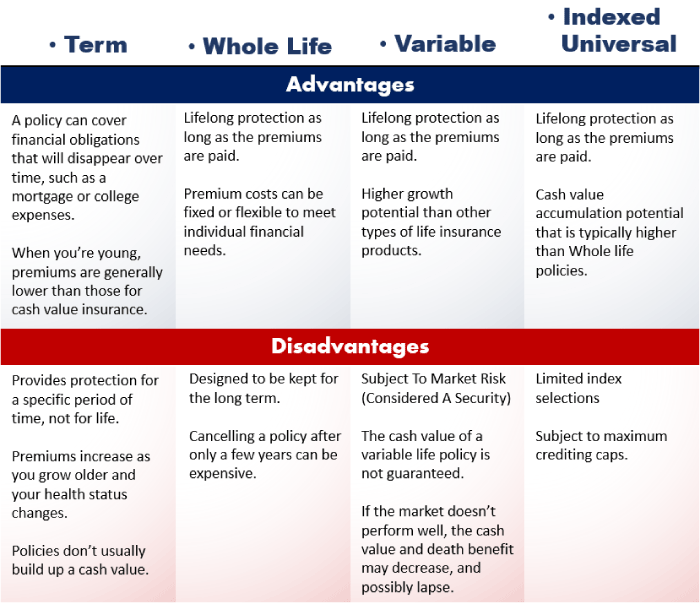Life insurance protects families and businesses from financial loss associated with the death of a loved one or key employee and as a financial tool for retirement planning.
Life insurance enables individuals and families of all income brackets and lifestyles to maintain financial independence in the face of financial hardships. Coverage is just as important for two-income families as it is for single-income families. Stay-at-home parents also need protection to help cover the costs of services they routinely provide, such as cooking, cleaning, and caring for children. Retirees who are living on limited income also find peace of mind knowing that an aging spouse will not be faced with a financial burden after their death.
- Protects families by providing benefits to survivors when a primary wage earner dies.
- The money from a life insurance policy can be used to help families to cover expenses such as mortgage payments, tuition, or sending children to college. Often the benefits from a life insurance policy can keep a family from poverty and welfare.
- Businesses use life insurance to protect jobs and families from financial hardships that can result from the death of an owner or key employee.
- Businesses use life insurance to protect against financial uncertainty and secure employees’ futures.
Types of Life Insurance
Indexed Universal Life Insurance policies are a type of universal life insurance. These types of policies are similar to traditional whole life policies because they build up cash value over time and provide lifelong protection as long as you pay the premiums. The death benefit can be increased (subject to insurability), or decreased at the policy owner’s request. Premiums can be flexible and paid periodically to meet your personal financial needs.
Along with providing a death benefit if you die, certain indexed universal life products also provide tax-deferred growth of your account value, growth linked to a formula based on changes in an equity-index, flexible premium options, a variety of riders and waivers, and two death benefit options.
Typical Use: A Balanced Approach To Life Insurance.
Term Life Insurance covers a defined period (one to 30 years) and only pays benefits if you die during the defined period of time. Depending on the terms of the policy, premiums will remain constant or increase each year. Some policies can be renewed at the end of the term, but premium rates will usually increase. Term insurance does not offer cash value buildup and it becomes more difficult to attain coverage as you get older.
Typical Use: Term insurance is designed to cover needs that will disappear in time, such as mortgage or tuition payments. Initially, premiums for term insurance are lower than for permanent insurance, which enables you to buy higher levels of coverage at a younger age.
Whole Life Insurance is the traditional type of permanent life insurance. Generally, the premiums remain constant over the life of the policy.
A policy accumulates a cash value, which can be borrowed against, surrendered for cash, or converted to an annuity. The cash value grows based on a fixed interest rate. The cash value is different from the policy’s face amount. The face amount is the money that will be paid to your beneficiary. Cash value is an amount that increases over time tax-deferred. The cash value can be used to cover premium payments, to purchase additional insurance, or as collateral for a loan. Loans must be paid back with interest or the death benefit paid to the beneficiary will be reduced. The policy also can be canceled or surrendered for its cash value. You may owe taxes on some of the cash value if the sum exceeds what you have paid in premiums. Finally, Whole Life typically requires higher premiums than term insurance.
Typical Use: Whole life is often used to obtain lifetime protection (assuming paid premiums) along with cash value accumulation.
Variable Insurance are a type of life policy where you can choose among a variety of investments offering different risks and rewards—stocks, bonds, combination accounts, or options that guarantee principal and interest. Death benefits and cash value will vary depending on the performance of the investments you select. By law, you’ll be given a prospectus for variable life insurance because it is regulated as a security. This prospectus will include financial statements and outline investment objectives, operating expenses, and risks.
Typical Use: Often used to obtain permanent protection with potential for high growth.
Advantages and Disadvantages

